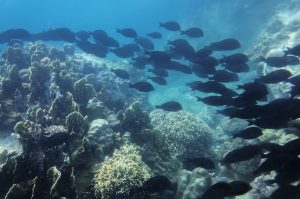Yesterday, the Philippine Navy vowed it would protect Filipino fishermen during the annual fishing ban that China has imposed in the contested South China Sea, including in areas lying within Manila’s own exclusive economic zone (EEZ).
Speaking to reporters, Navy spokesperson Ray Vincent Trinidad said that the force had deployed additional vessels to protect fishermen from crackdowns by the China Coast Guard.
“The Philippine Navy does not recognize this provocative statement nor will we be deterred in performing our mandate of securing the welfare of Filipinos wherever he or she is – on land or on sea,” said Trinidad, BenarNews reported.
Trinidad’s comments came after the the CCG’s announcement that it would begin detaining for up to 60 days without trial any foreigners trespassing into areas of the South China Sea over which it claims sovereignty. The order is due to go into effect on June 15.
On Monday, the Department of Foreign Affairs (DFA) said that it had formally protested Beijing’s annual fishing moratorium, which will run from May 1 until September 16, “insofar as it includes the Philippines maritime zones over which the Philippines has sovereignty, sovereign rights, and jurisdiction.” In a statement, the DFA said that it had “called on China to cease and desist from the conduct of illegal actions that violates the Philippines’ sovereignty, sovereign rights, and jurisdiction in its maritime zones.”
The DFA said that this was the 25th diplomatic protest that the Philippines had made against China this year and the 158th during President Ferdinand Marcos Jr.’s two years in office. All have involved the disputes in the South China Sea, where China’s expansive “nine-dash line” maritime claim lops off a large portion of the Philippines’ 200-nautical-mile EEZ.
China claims that the ban is intended to “promote sustainable marine fishery development and improve marine ecology,” as the Chinese state-run People’s Daily once put it.
There is no doubt that overfishing is a pressing issue in the South China Sea. Rapid population growth and economic development in the surrounding region has increased demand for fish, placing immense pressure on the region’s fish stocks. But the Chinese-led conservation measures are inseparable from the maritime disputes in the South China Sea. Nations like the Philippines and Vietnam worry that acquiescing to the ban could be interpreted as recognition of Chinese claims.
China’s announcement of the ban – and the defiance of the Philippines and Vietnam – has become an annual ritual. But it takes place in an environment of increased tension this year. The past 18 months have seen a string of dangerous high-seas confrontations between CCG patrol boats and Philippine Coast Guard vessels, as relations between the two sides drop to a decade-long low.
A good deal of the tension has focused on Second Thomas Shoal, where Chinese vessels have attempted to prevent the Philippine Navy from resupplying its outpost on a grounded warship. There have also been stand-offs in the vicinity of Scarborough Shoal, where the CCG has taken steps to prevent access to the shoal’s central lagoon, a longtime fishing ground for Filipino fishermen from Zambales, on the island of Luzon.
Like the government in Manila, the region’s fishermen have pledged to ignore the Chinese order. “We will not comply with China’s baseless fishing ban in our waters,” Joey Marabe, provincial coordinator of the Filipino fishermen’s group Pamalakaya in Zambales, told the Philippine Star. “No foreign entity has the right to prohibit fishing in our own territory.”
While this Philippine defiance is very much par for the course, the background tensions in the South China Sea mean that there is a greater, even if still relatively small, chance than in many years that a dispute over access to fishing grounds could escalate into a wider conflict.

































